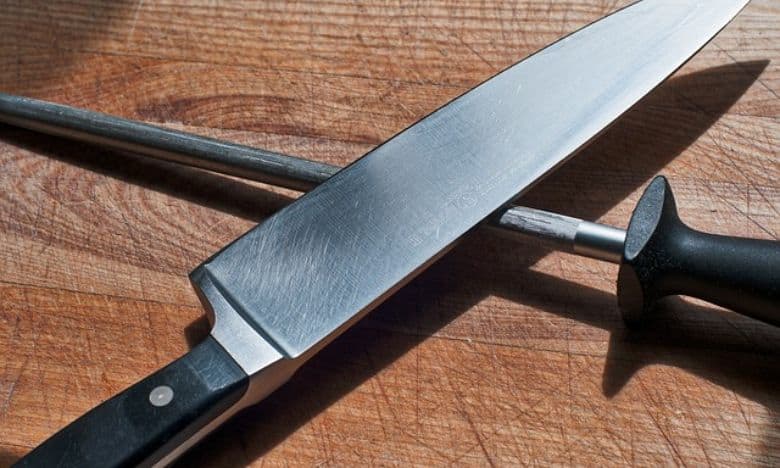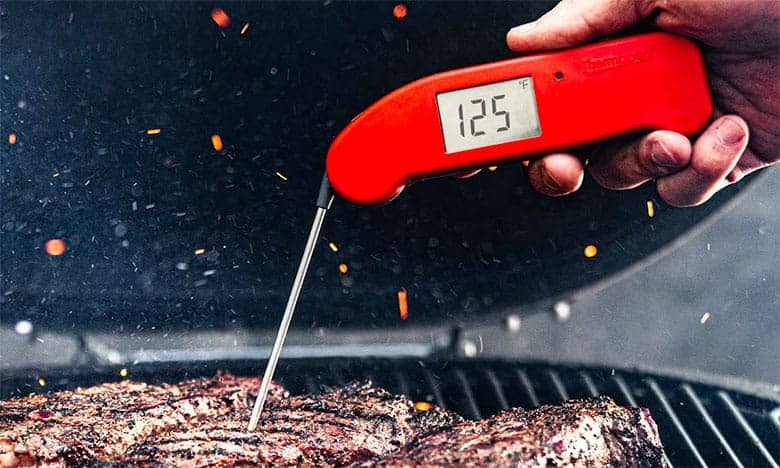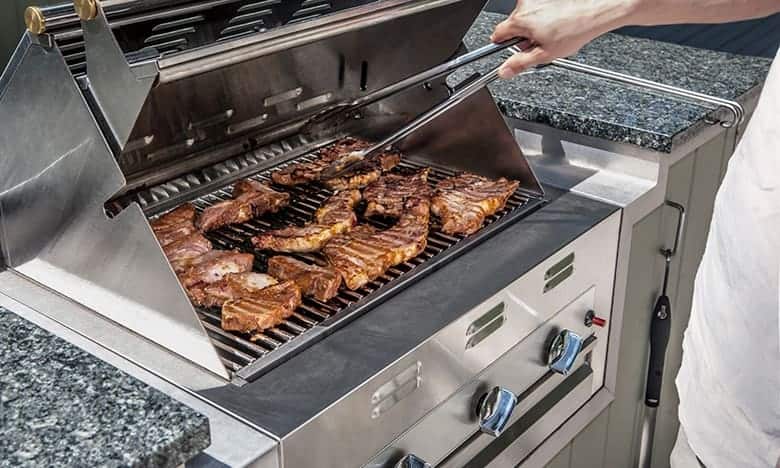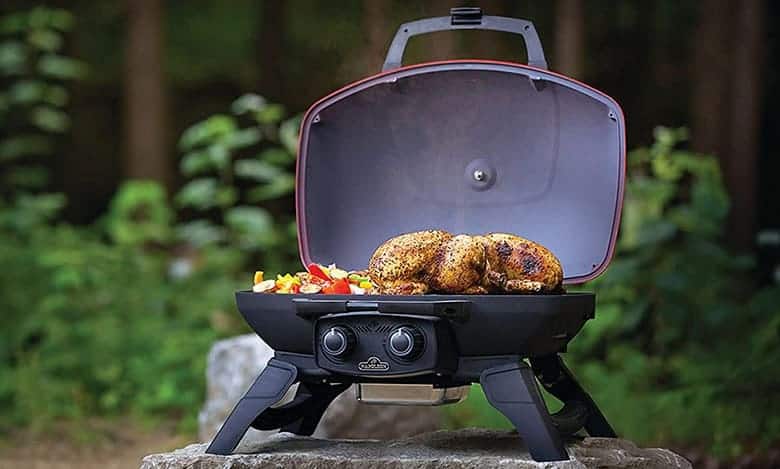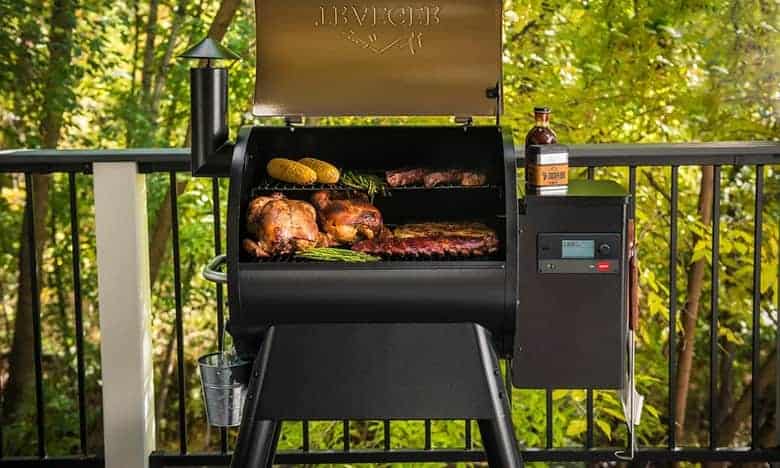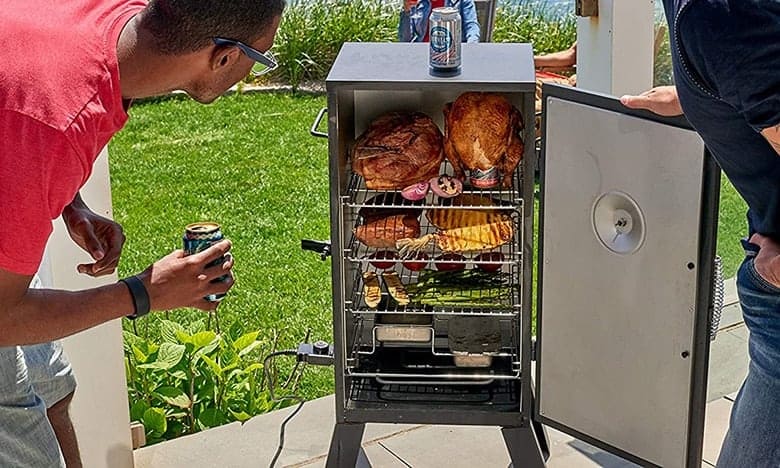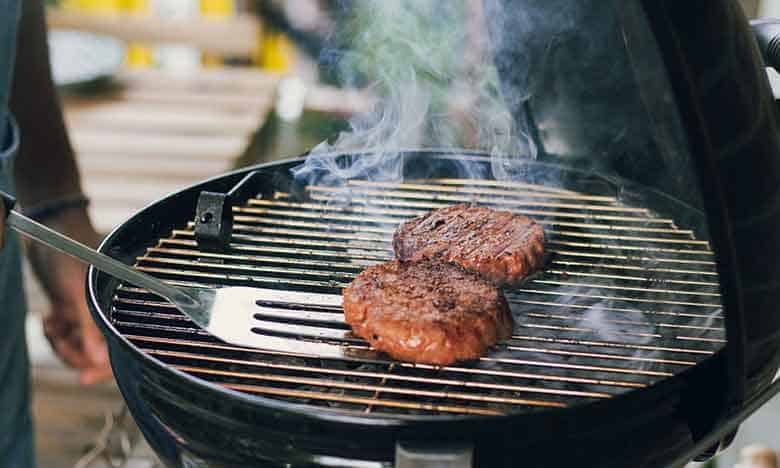Discover the best honing steel to keep your kitchen knives at their peak performance. Whether you’re a professional chef or a home cook, having a honing steel at hand will ensure your blades stay sharp and efficient, making every cut smoother and every meal preparation more enjoyable.
Table of Contents
What is a Honing Steel?
When it comes to maintaining your knives, you may have heard of a honing steel. Often mistaken for a knife sharpener, a honing steel brings a slightly different but equally vital role to your kitchen arsenal.
Instead of grinding away at the knife edge to create a sharper point (which is the job of a sharpener), a honing steel realigns the knife edge at a microscopic level. This action leads to a smoother cut and can remedy a blade that’s begun to feel dull.
Regular honing with a traditional honing steel, ideally before each use, keeps your knife’s edge straight and primed for cutting. This whole process is especially useful when your knife starts to catch on the food you’re cutting or when more force is needed to slice through big cuts of meat like Smoked Brisket.
By maintaining your knife edge with a honing steel, you can extend the time between sharpenings with your harsher sharpening tools and increase the lifespan of your brisket slicing knives, and all other knives in your kitchen lineup!
Sharpening vs Honing
Though often used interchangeably, knife sharpening and knife honing are distinct processes in regular knife maintenance. Sharpening involves removing tiny amounts of metal from the blade’s beveled edge to create a new, sharp edge. This process is performed using tools like electric knife sharpeners, whetstones, or water stones.
While honing should ideally be done before each knife use to maintain an effective blade, sharpening is typically required less often—around every 4 to 6 months, depending on the usage of the knife. When a knife is frequently used and starts to become truly dull, that’s the time to turn to sharpening.
Remember, a well-maintained knife not only enhances your culinary experience but also ensures safety in the kitchen. So, understanding the difference between honing and sharpening is key to getting the best out of your kitchen knives.
Our Picks: The Best Honing Steels
- Overall Best Honing Steel: Winware Stainless Steel Sharpening Steel
- Amazon’s Choice: Allwin-Houseware 12″ Sharpening Steel
- Best Diamond Steel: Messermeister 12” Diamond Oval Sharpening Rod
- Best Ceramic Steel: Noble Home Professional 11.5″ Ceramic Honing Rod
- Best Honing Steel For Japanese Knives: Shun Cutlery 9″ Honing Steel
- Best Budget-Friendly Honing Steel: Kota Japan 12″ Diamond Carbon Steel Sharpener Rod
Overall Best Honing Steel
Winware Stainless Steel Honing Steel
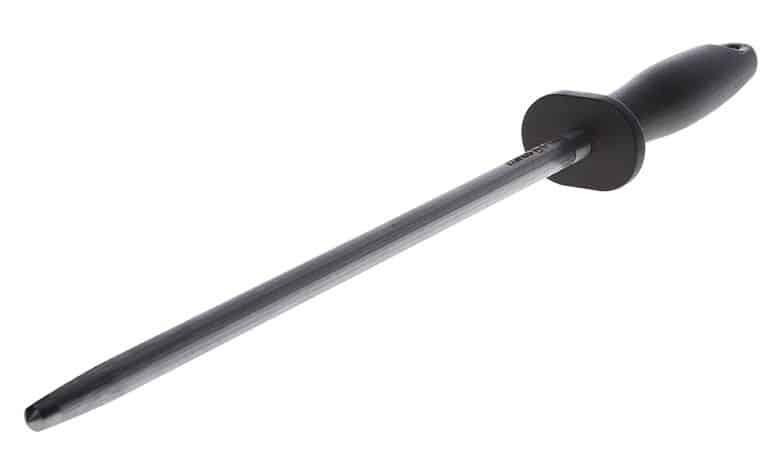
The Winware Sharpening Steel, boasting a 12-inch rod length, is one of the best overall honing tools on our list. Available in a larger 14-inch variant as well, this versatile tool is a valuable addition to any kitchen setup.
During our time using the Winware stainless steel rod, we were impressed by its effective performance and durability. The anti-corrosive nature of the stainless steel material was a standout feature, ensuring long-lasting use even with residual moisture.
The tool also has a convenient hanging loop for easy storage, and the evenly-ridged surface offered an effective honing experience. However, it might be a bit too abrasive for fine-edge blades, and the handle could be more comfortable.
When compared with other similar products, Winware provides excellent value. Unless you’re a professional, you might not notice significant differences with pricier options.
What We Liked
- Anti-corrosive
- Convenient hanging loop for storage
- Evenly-ridged surface ensures an even hone for your knife blade
What We Didn’t Like
- May be too rough for fine-edge blades
- The handle may not be the most comfortable
Overall, the Winware Stainless Steel Sharpening Steel is a great value product that delivers on its promises. It’s sturdy, durable, and effectively hones your kitchen knives. While it does have minor drawbacks, like being potentially harsh on fine-edge blades and having a less comfortable handle, its overall performance and affordable price outweigh these cons.
Amazon's Choice
Allwin-Houseware 12″ Honing Steel
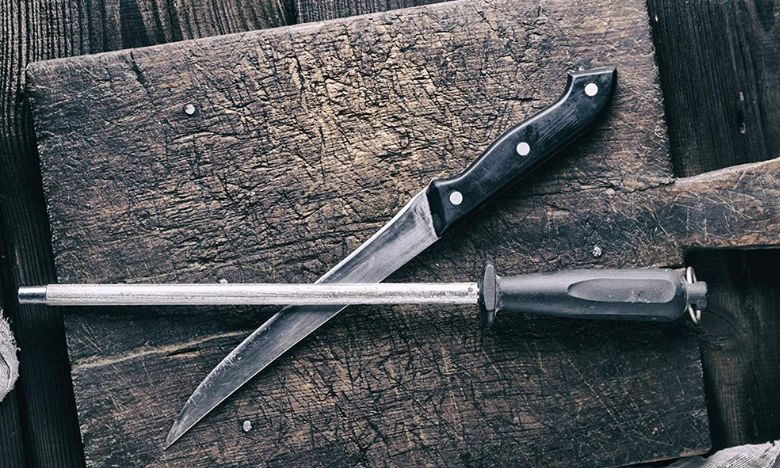
The Allwin-Houseware 12″ Sharpening Steel is a top pick on Amazon, with thousands of happy customers. It’s made of carbon steel and plated with nickel chrome, while the handle is composed of easy-to-grip polypropylene.
We found that this honing rod efficiently maintained the sharpness of our knives with regular use. The carbon steel rod, plated with nickel chrome, held up well, and the easy-to-grip handle was a bonus. However, we did note that the handle felt somewhat lightweight and not as heavy-duty as we would have liked.
When stacked against other similar products, like the Winware Stainless Steel Sharpening Steel, the Allwin-Houseware 12-inch honing steel stands out for its affordability and positive customer reviews. Though both are magnetized for safety and convenience, the Allwin-Houseware rod is made of carbon steel, offering a slightly different honing experience.
What We Liked
- Effective in maintaining knife edge
- Carbon steel construction guarantees durability
- The ergonomic handle comfortably fits all hand sizes
What We Didn’t Like
- The handle may feel too light for some users
All in all, the Allwin-Houseware 12″ Sharpening Steel offers excellent value for its price and is one of our top picks for those on a tight budget. For under $15, it’s a fantastic investment for any kitchen.
Best Diamond Steel
Messermeister 12” Diamond Oval Sharpening Rod
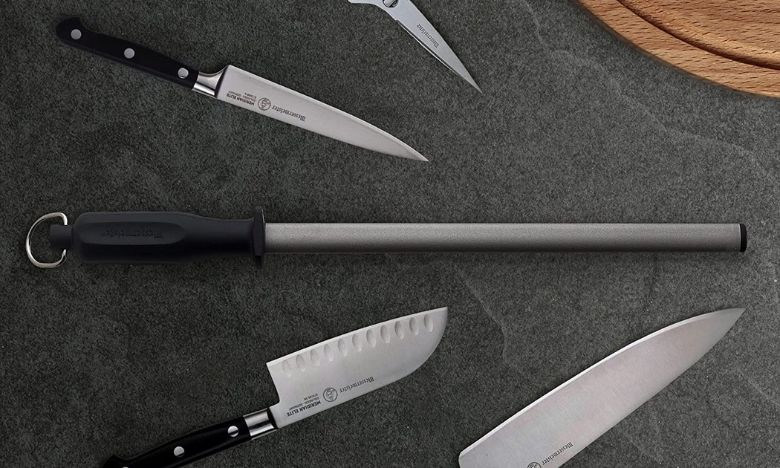
The Messermeister 12” Diamond Oval Sharpening Rod is specifically designed for those who need a reliable, high-performance honing rod. It’s particularly suited for honing serrated knives thanks to its narrow edge and 800-grit diamond abrasive. This tool is versatile and is offered in 10- or 12-inch sizes, allowing you to choose based on your knife size and storage capabilities.
While testing the Messermeister Diamond Oval Sharpening Rod, we found that it was notably efficient, especially when dealing with serrated knives. The 800-grit diamond abrasive provides a strong honing performance without damaging the knives. Although the rod may feel bulky, its light weight makes it easy to handle.
Messermeister also makes a great ceramic sharpening rod. Both their diamond and ceramic steels offer cutting-edge craftsmanship, making the entire honing process a breeze.
What We Liked
- The narrow edge makes it great for honing serrated knives
- Comes in multiple sizes
- It’s a powerful honing tool that isn’t overly harsh on your knives
What We Didn’t Like
- Some users note that the diamond coating might wear away with frequent use
- Despite being lightweight, some users report this sharpening rod feels a bit bulky
Overall, the Messermeister 12” Diamond Oval Sharpening Rod is a reliable, versatile honing steel worth considering. With its unique design, high-quality diamond abrasive, and ability to handle serrated knives, it offers good value.
Best Ceramic Steel
Noble Home Professional 11.5″ Ceramic Honing Rod
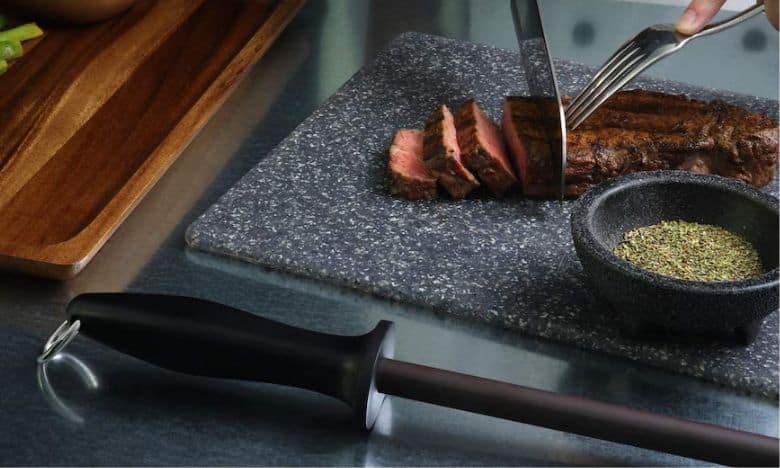
The Noble Home Professional 11.5″ Ceramic Honing Rod is an impressive kitchen tool, specially designed for knife enthusiasts seeking high-quality sharpening options. Crafted with top-grade Japanese ceramics, this honing rod promises durability and superior performance with two unique grit levels to cater to various sharpening needs.
During our testing, the Noble Home Ceramic Honing Rod performed exceptionally well. The dual grit levels allowed us to hone both very dull knives and sharpen knives that just needed a quick touch-up. However, we did feel that labeled grit levels would be a helpful addition.
Compared to the Allwin-Houseware Sharpening Steel, the Noble Home Ceramic Honing Rod stood out due to its dual grit levels and the quality of the ceramic used. The Noble Home rod is more delicate but provides precision honing, especially beneficial for professional chefs, owners of Japanese knives, or any home cooks.
What We Liked
- Two grit levels for different sharpening needs
- Made of premium Japanese ceramics
What We Didn’t Like
- Grit levels aren’t labeled, which can get confusing for beginners
- Like all ceramics, the honing rod is susceptible to damage if dropped or hit against a hard surface
In summary, the Noble Home Ceramic Honing Rod is an excellent investment for maintaining and sharpening your knives. Its dual grit levels and high-quality Japanese ceramic construction make it a versatile and reliable choice. Although care must be taken when handling it to avoid damage, its performance and benefits considerably outweigh this drawback.
Best Honing Steel For Japanese Knives
Shun Cutlery 9″ Honing Steel
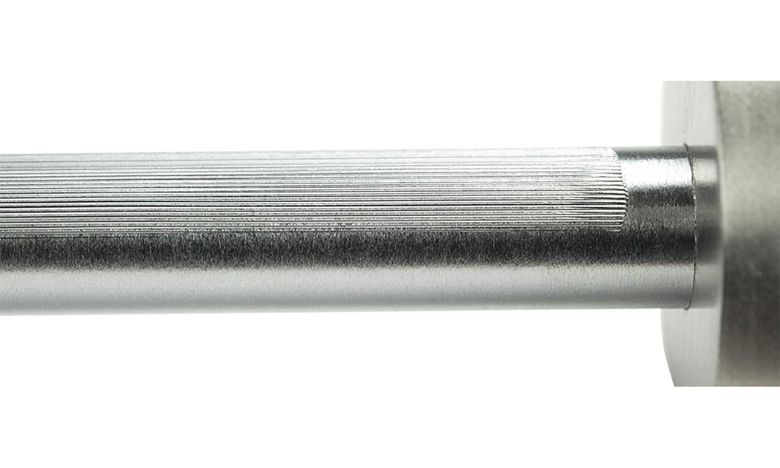
The Shun Cutlery 9″ Honing Steel is a top-notch choice for those with a collection of Japanese knives. This honing steel, designed by Shun, a highly esteemed name in the world of Japanese knives, ensures your blades are kept in pristine condition.
We found the Shun Honing Steel to be an excellent tool for maintaining our Japanese knives. The combination of smooth and micro-ribbed surfaces was highly useful for regular upkeep and thorough maintenance.
We also appreciated the comfortable grip of the Pakkawood handle and its ebony finish. Although we found the rod’s length a bit limiting for larger knives, it did a splendid job with the smaller knives like paring knives.
Compared to the Noble Home Ceramic Honing Rod, the Shun Honing Steel provides a similar dual-surface feature. However, the Shun steel is specifically designed for Japanese knives and comes with a unique handle design. The shorter length, while being a disadvantage for larger knives, provides versatility in honing various cutlery.
What We Liked
- Two honing surfaces
- Pakkawood handle ensures a secure, comfortable grip
- Ebony finish matches other Shun Classic knives.
What We Didn’t Like
- At 9 inches, this honing steel is shorter than most options on the market
- Only suited for chef’s knives of 7 or 8″ and smaller utility knives
All in all, the Shun 9-inch Honing Steel is a value-packed tool that offers great performance in maintaining your Japanese knives. Its dual-surface feature, comfortable handle, and built-in angle guide ensure precise and easy honing.
Despite the limitation in length, its specific design for Japanese knives, combined with the reputation of Shun, makes it a worthy addition to your kitchen.
Best Budget-Friendly Honing Steel
Kota Japan 12″ Diamond Carbon Steel Sharpener Rod
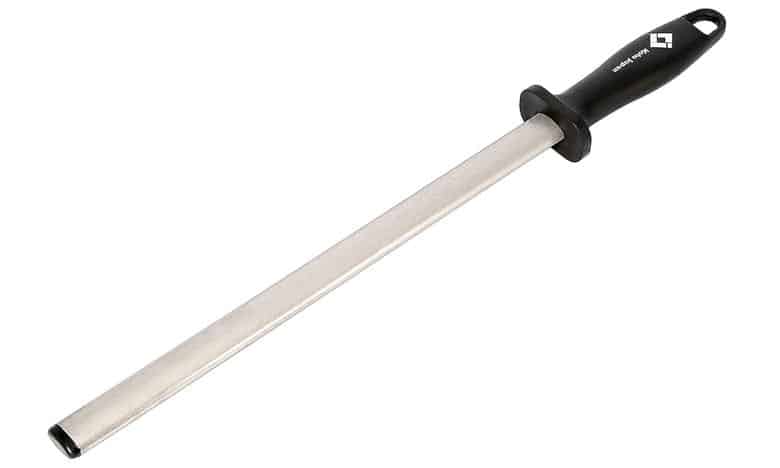
The Kota Japan 12″ Diamond Carbon Steel Sharpener Rod is a cost-effective choice for keeping your knives sharp and ready for action. This honing steel, embedded with diamond dust, boasts an innovative shape and several user-friendly features that make it a stand-out choice for your kitchen.
The ergonomic handle was comfortable, and the safety features were appreciated. However, we noticed that the diamond coating seemed to wear off quicker than we’d like, which means the product might need replacing sooner for heavy users.
This honing steel is suitable for budget-conscious users who need an effective and user-friendly tool for their knife maintenance. It’s also great for those who appreciate a warranty with their purchases, offering long-term assurance.
What We Liked
- The oval shape of this honing steel increases its sharpening efficiency
- A rubber seal at the end of the rod ensures stability on your countertop or cutting board
- Lifetime Warranty
What We Didn’t Like
- The diamond surface can wear off quickly with frequent use
All in all, the Kota Sharpener Rod offers solid performance and excellent value for the price. Its unique oval shape, comfortable handle, and diamond coating make honing easy and efficient.
While the coating may wear out faster with frequent use, the lifetime warranty provides reassurance. Despite minor shortcomings, this honing steel is an affordable and efficient tool that enhances your kitchen experience, keeping your blades sharp and ready for action!
In Review: The Best Honing Rods Available Today
- Best Overall: Winware Stainless Steel Sharpening Steel
” evenly-ridged surface offered an effective honing experience” - Amazon’s Choice: Allwin-Houseware 12″ Sharpening Steel
“excellent value for its price and is one of our top picks for those on a tight budget” - Best Diamond Steel: Messermeister 12” Diamond Oval Sharpening Rod
“notably efficient, especially when dealing with serrated knives” - Best Ceramic Steel: Noble Home Professional 11.5″ Ceramic Honing Rod
“two unique grit levels to cater to various sharpening needs” - Best Honing Steel For Japanese Knives: Shun Cutlery 9″ Honing Steel
“comfortable grip of the Pakkawood handle and its ebony finish” - Best Budget-Friendly Honing Steel: Kota Japan 12″ Diamond Carbon Steel Sharpener Rod
“cost-effective choice for keeping your knives sharp and ready for action”
Factors To Consider When Buying a Honing Steel
When you’re looking to buy a honing steel, you’ll encounter a variety of choices in the market. To make an informed decision, you should consider several key factors. Let’s take a look at these considerations.
Material
The material of the honing steel is one of the most important aspects to consider. The choice of material can influence the tool’s effectiveness, durability, and the type of knives it can hone.
- Carbon Steel Honing Steel: Carbon steel is a common material for honing steel, known for its durability and longevity. This type of honing steel is typically less abrasive and works well for regular maintenance of your knives.
- Diamond Honing Steel: Diamond steels are among the hardest and most abrasive honing steels available. A diamond honing steel, with its diamond coating, can effectively straighten and sharpen knife edges. Diamond honing steels can also handle harder knife materials, making them a versatile choice.
- Ceramic Honing Steel: Ceramic honing steels provide a balance between carbon steel and diamond steels. Ceramic rods are hard enough to hone most knives and are generally gentler on your knives than diamond honing steels.
Steel Length
The length of the honing steel matters because it needs to be longer than the knife you’re honing. A longer honing steel allows for more contact with the knife blade edge and helps ensure a smoother honing process and a perfectly sharp knife.
On the other hand, if the sharpening steels are too long, it could become unwieldy and difficult to use. Consider the size of your knives before settling on a length.
Handle Comfort and Safety
The handle of your honing steel should provide a secure grip and comfort during use. A good handle design will prevent your hand from slipping toward the steel rod, enhancing safety.
Look for features like an ergonomic design, non-slip materials, or a finger guard to ensure a safe and comfortable honing process.
How To Use a Honing Steel
Using a honing steel is a straightforward process if you know what you’re doing! Follow these step-by-step instructions before using your new honing steel for the best results.
Start by securely holding the honing steel’s handle and placing the rod’s tip on a stable tabletop. Position your knife at an angle between 15 and 20 degrees. This angle is crucial to aligning the blade’s edge effectively.
Next, pull the knife down along the length of the honing steel, ensuring to maintain the angle. Alternate sides for each stroke, working the blade against the steel. For optimal results, you’ll want to complete about 8 to 9 strokes for each side of your knife’s edge.
Maintaining your honing steel is as important as using it. After each honing session, take the time to clean your steel, particularly if it has a magnetized surface that can attract tiny steel particles from your knives.
This cleaning is easily done using a cloth soaked in vinegar, which helps remove any steel residues, keeping your honing steel in tip-top shape for your next knife maintenance session.
